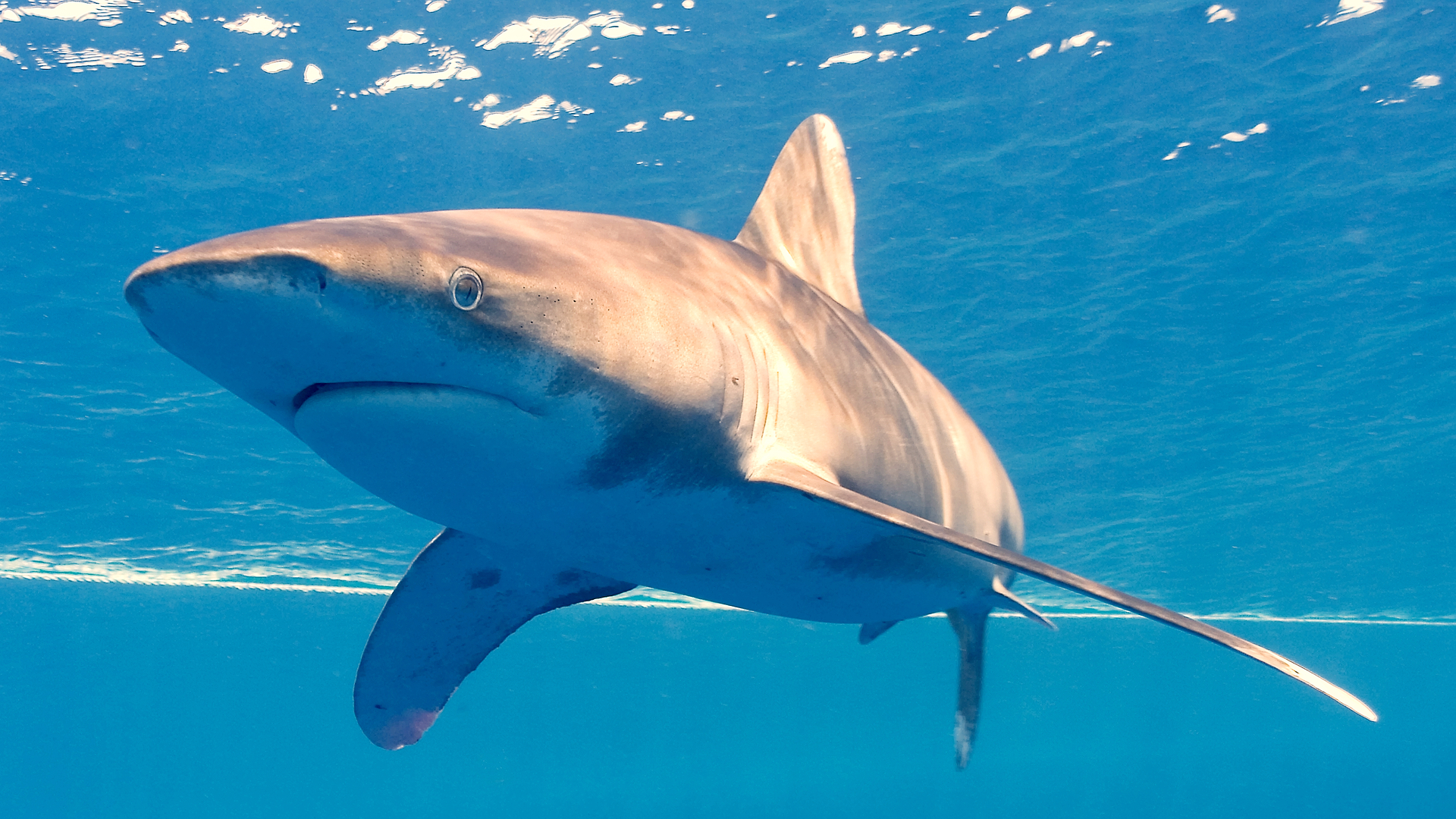- Home
- Conservancy
- Oceanic whitetip shark
WHERE TO SEE Oceanic whitetip shark
Description
Oceanic white-tipped whaler, and Silvertip shark, is a large pelagic requiem shark inhabiting tropical and warm temperate seas. Its stocky body is most notable for its long, white-tipped, rounded fins. This aggressive but slow-moving fish dominates feeding frenzies, and is a danger to shipwreck or air crash survivors. Recent studies show steeply declining populations because its large fins are highly valued as the chief ingredient of shark fin soup and, as with other shark species, the whitetip faces mounting fishing pressure throughout its range
Fun Facts
Behaviour Shark accompanied by group of fish with black and white vertical stripes and split tail fin Oceanic whitetip photographed at the Elphinstone reef, Red Sea, Egypt, accompanied by pilot fish The oceanic whitetip is usually solitary and slow-moving, and tends to cruise near the top of the water column, covering vast stretches of empty water scanning for possible food sources. Until the 16th century, sharks were known to mariners as "sea dogs" and the oceanic whitetip, the most common ship-following shark, exhibits dog-like behaviour when its interest is piqued: when attracted to something that appears to be food, its movements become more avid and it will approach cautiously but stubbornly, retreating and maintaining a safe distance if driven off, but ready to rush in if the opportunity presents itself. Oceanic whitetips are not fast swimmers, but they are capable of surprising bursts of speed. Whitetips commonly compete for food with silky sharks, making up for its comparatively leisurely swimming style with aggressive displays. Groups often form when individuals converge on a food source, whereupon a feeding frenzy may occur. This seems to be triggered not by blood in the water or by bloodlust, but by the species' highly strung and goal-directed nature (conserving energy between infrequent feeding opportunities when it is not slowly plying the open ocean). The oceanic whitetip is a competitive, opportunistic predator that exploits the resource at hand, rather than avoiding trouble in favour of a possibly easier future meal. There does not seem to be segregation by sex and size. Whitetips follow schools of tuna or squid, and trail groups of cetaceans such as dolphins and pilot whales, scavenging their prey. Their instinct is to follow baitfish migrations that accompany ocean-going ships. When whaling took place in warm waters, oceanic whitetips were often responsible for much of the damage to floating carcasses
